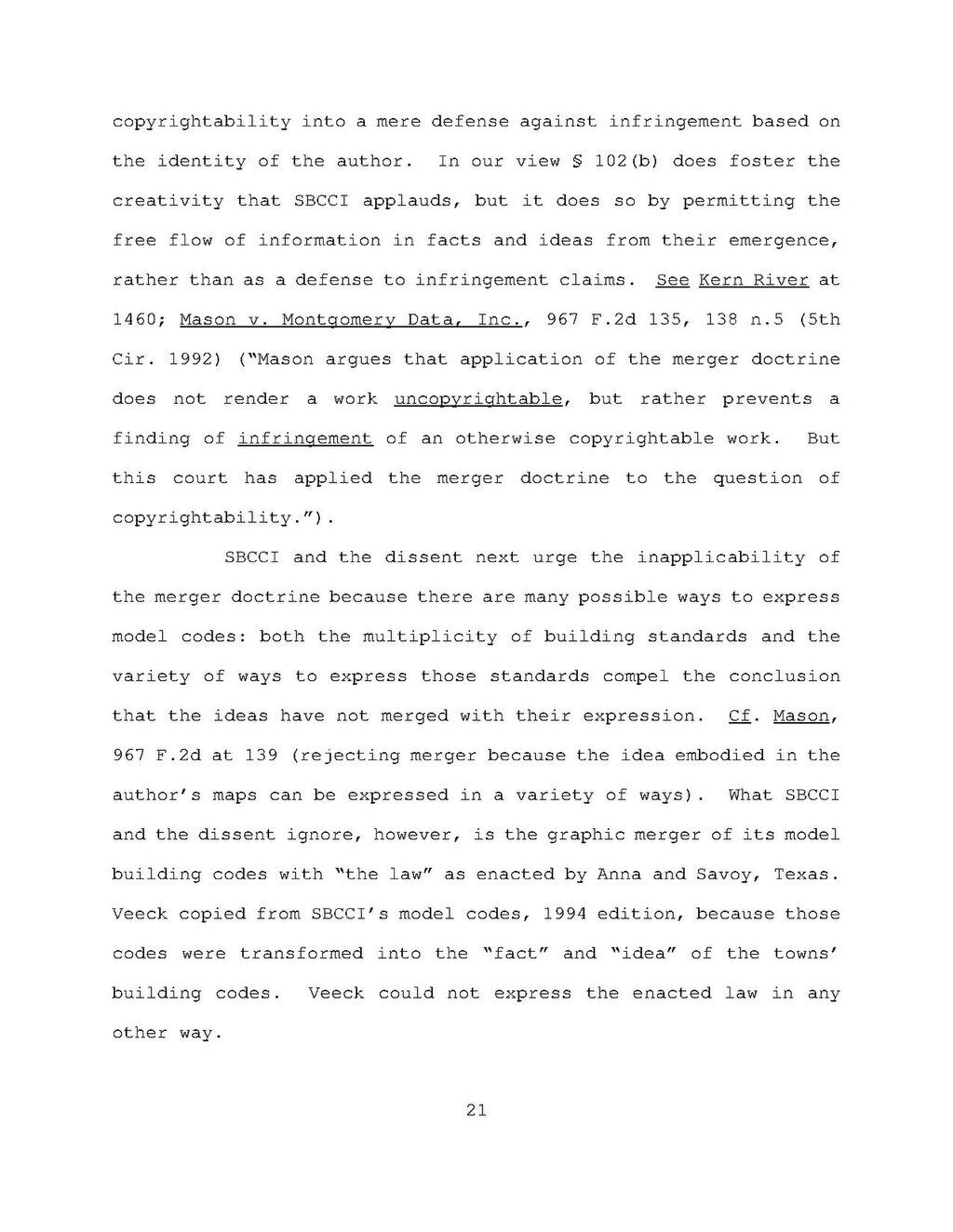copyrightability into a mere defense against infringement based on the identity of the author. In our view § 102(b) does foster the creativity that SBCCI applauds, but it does so by permitting the free flow of information in facts and ideas from their emergence, rather than as a defense to infringement claims. See Kern River at 1460; Mason v. Montgomery Data, Inc., 967 F.2d 135, 138 n.5 (5th Cir. 1992) ("Mason argues that application of the merger doctrine does not render a work uncopyrightable, but rather prevents a finding of infringement of an otherwise copyrightable work. But this court has applied the merger doctrine to the question of copyrightability.").
SBCCI and the dissent next urge the inapplicability of the merger doctrine because there are many possible ways to express model codes: both the multiplicity of building standards and the variety of ways to express those standards compel the conclusion that the ideas have not merged with their expression. Cf. Mason, 967 F.2d at 139 (rejecting merger because the idea embodied in the author's maps can be expressed in a variety of ways). What SBCCI and the dissent ignore, however, is the graphic merger of its model building codes with "the law" as enacted by Anna and Savoy, Texas. Veeck copied from SBCCI's model codes, 1994 edition, because those codes were transformed into the "fact" and "idea" of the towns' building codes. Veeck could not express the enacted law in any other way.
21
